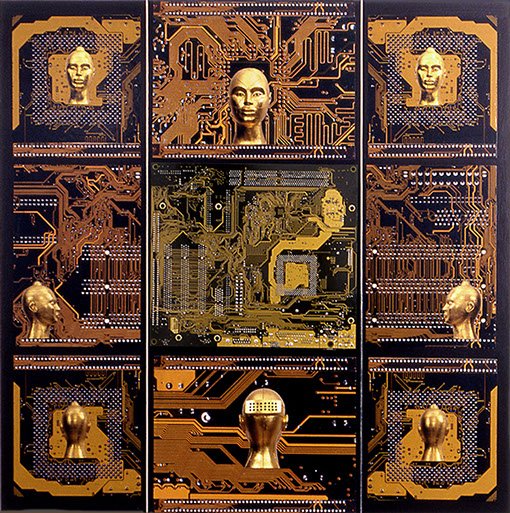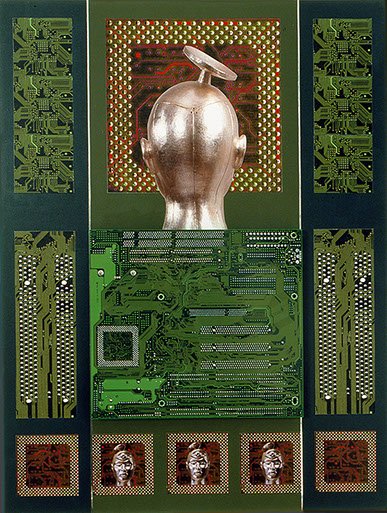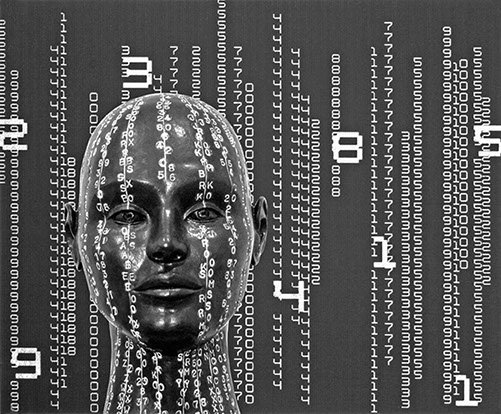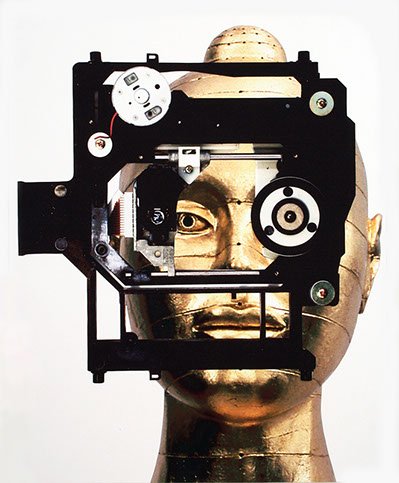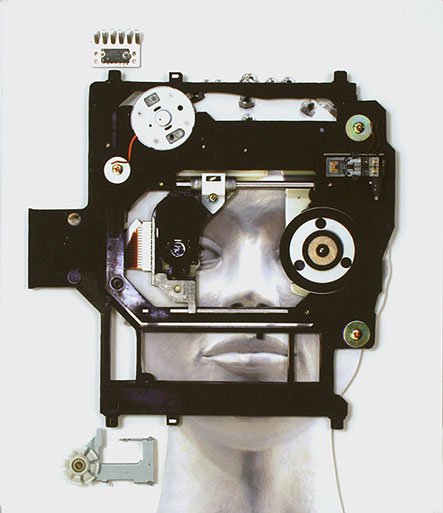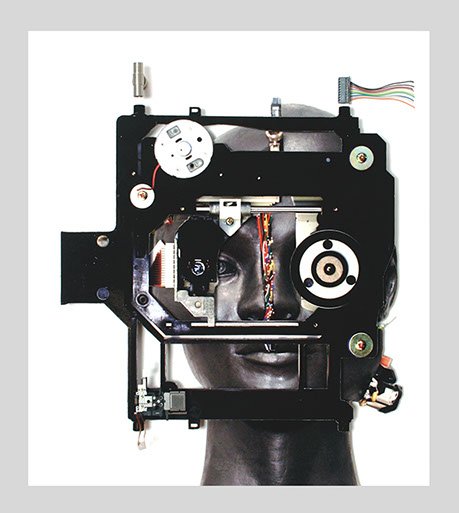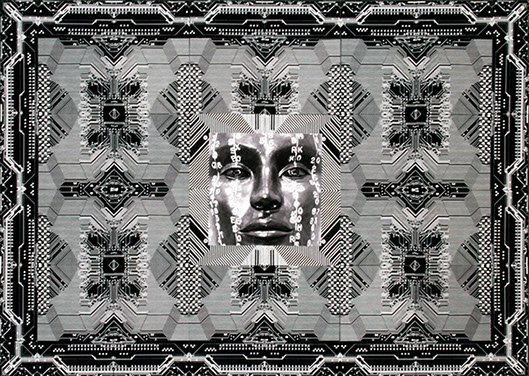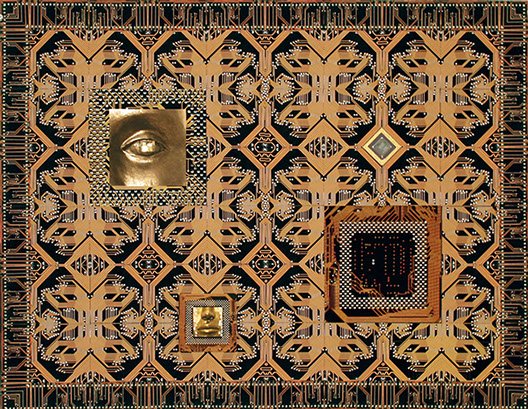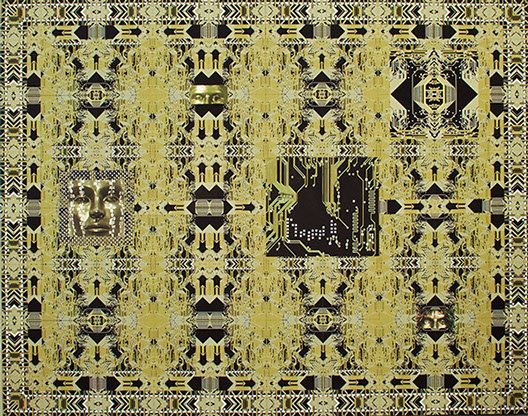2003–2009 Digital Collage
Myth + Memory is a series of montage works that reference the themes of Lay's sculptures: Altar Heads, and the pictorial structure of early Tibetan mandalas. In this series, computer circuit boards are counterpoised with manipulated photographs of the Altar Heads to illuminate the cross-cultural fusion of the human spirit and technology.
Life-Support is a series of photo collage works that reference the themes of Lay’s recent sculptures. In this series photographs of computer parts, the optical drive and hard disk drive are counterpoised with photographs of the “heads” to illuminate the fusion of the human spirit and technology and our role as enhanced humans in the Post-Modern Era.
From Whitehot Magazine, November 2010, Kofi Forson Interviews Jill Conner on Core and Mantle Exhibition.
Forson: I find the most transcendental piece to be Pat Lay’s “Life Support.” (2008) It’s very much a visible thing, at once cinematic and yet evolving lyrically. What’s your impression of this particular piece?
Conner: I favored the placement of a machine part over that of a human portrait. Pat Lay pieces together our strong attachment to technology. Her work is also a critique of the computer fetish through its distortion of an individual’s identity, giving more prominence to the frame of a computer hard drive. Put simply, we are very close to living pure artificial lives.
In this series, digital images scanned from computer circuit boards and cropped photographic images from the sculptures are printed on paper and then collaged and tiled into patterns that transform them into a new matrix. A place, created in response to our world of technological advancements and digital progress. The collages are inspired by and reference the photomontages of Raoul Hausmann and Hannah Hoch, the Dada collages of Max Ernst and question what it means to be human.
